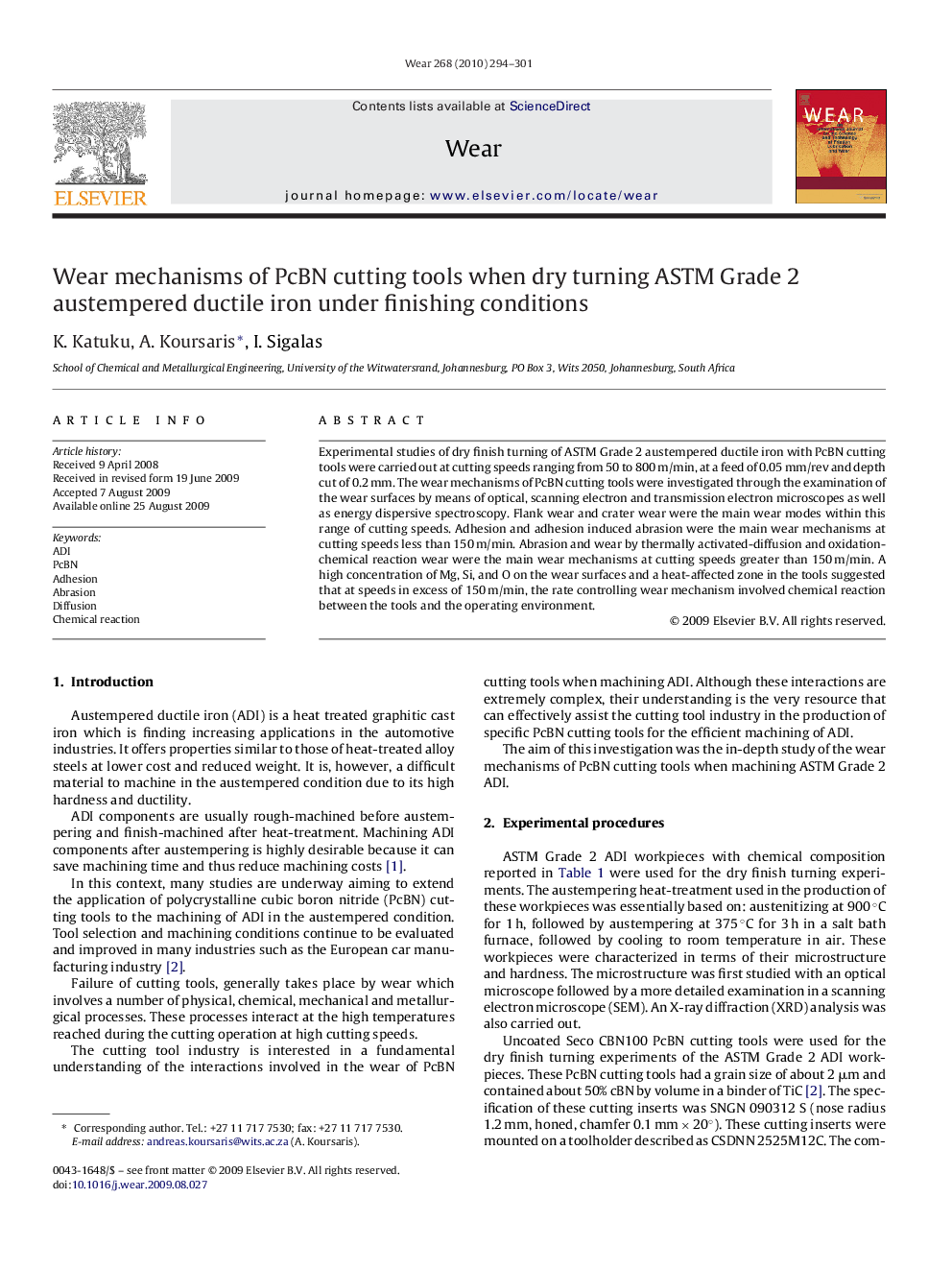| Article ID | Journal | Published Year | Pages | File Type |
|---|---|---|---|---|
| 618918 | Wear | 2010 | 8 Pages |
Abstract
Experimental studies of dry finish turning of ASTM Grade 2 austempered ductile iron with PcBN cutting tools were carried out at cutting speeds ranging from 50 to 800Â m/min, at a feed of 0.05Â mm/rev and depth cut of 0.2Â mm. The wear mechanisms of PcBN cutting tools were investigated through the examination of the wear surfaces by means of optical, scanning electron and transmission electron microscopes as well as energy dispersive spectroscopy. Flank wear and crater wear were the main wear modes within this range of cutting speeds. Adhesion and adhesion induced abrasion were the main wear mechanisms at cutting speeds less than 150Â m/min. Abrasion and wear by thermally activated-diffusion and oxidation-chemical reaction wear were the main wear mechanisms at cutting speeds greater than 150Â m/min. A high concentration of Mg, Si, and O on the wear surfaces and a heat-affected zone in the tools suggested that at speeds in excess of 150Â m/min, the rate controlling wear mechanism involved chemical reaction between the tools and the operating environment.
Related Topics
Physical Sciences and Engineering
Chemical Engineering
Colloid and Surface Chemistry
Authors
K. Katuku, A. Koursaris, I. Sigalas,
